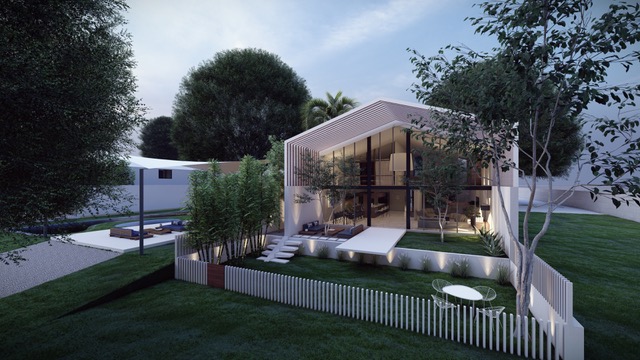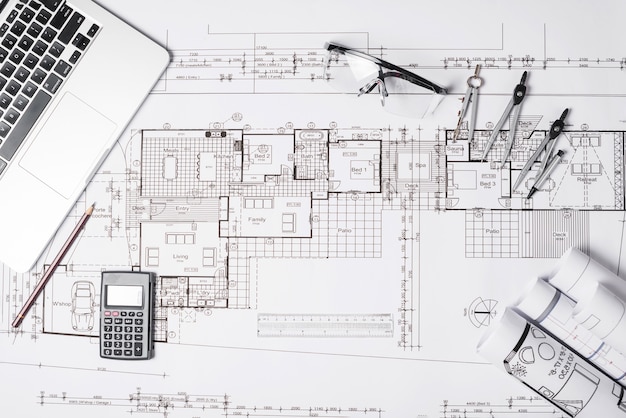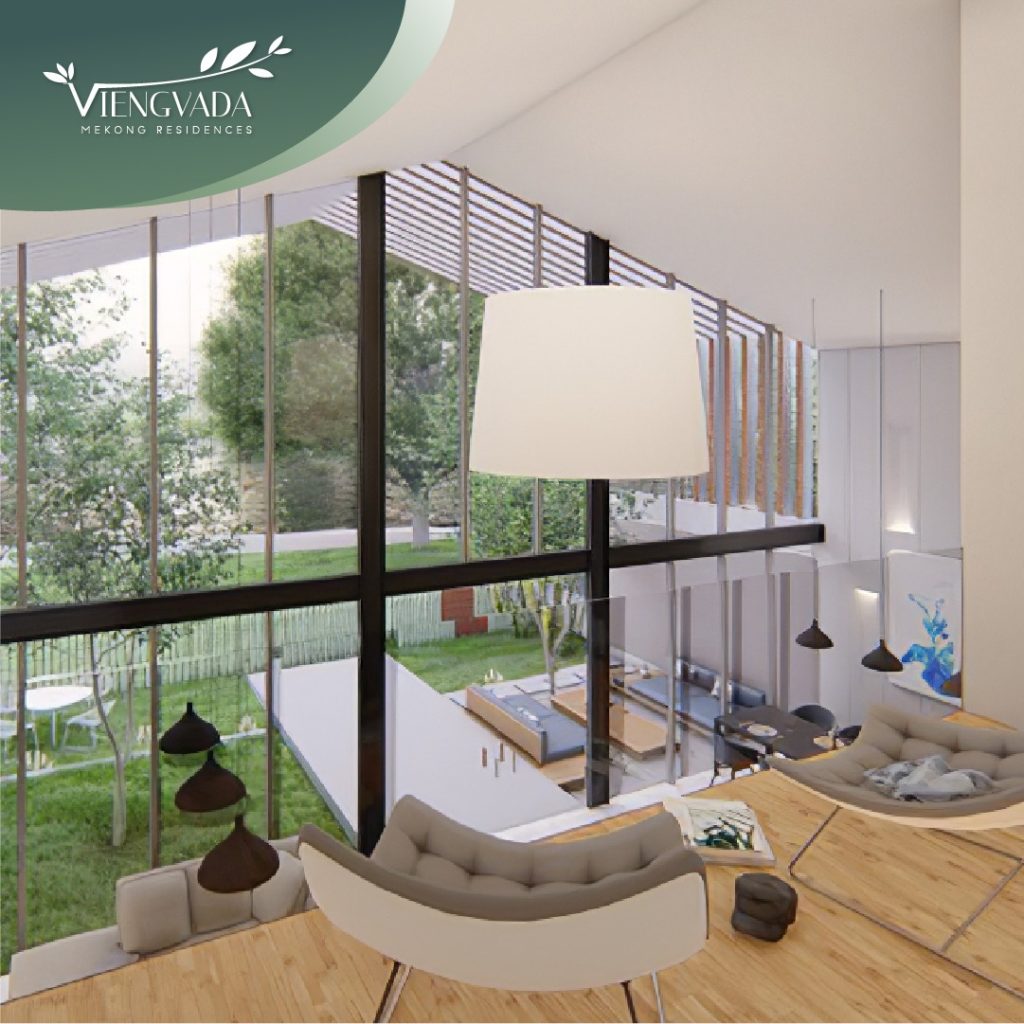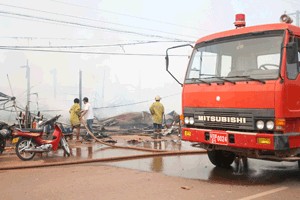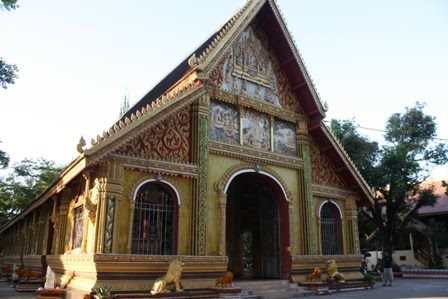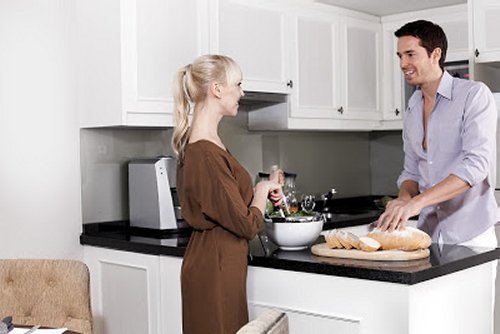Vientiane Architecture & Housing over the years… (p1)
Mr. Somphonsack Phayouphorn is a Swiss-Lao architect living in Vientiane. Born in Luang Prabang, he grew up and studied architecture, urbanism and landscape architecture in Geneva (Switzerland), where he lived and worked before returning to his native country and founding Saola Architects in 2012. He has worked on several urban and architectural projects in Switzerland and realized numerous urban, residential and commercial projects in Laos. Saola Architects is currently developing the design for Viengvada Mekong Residences.
How would you say lifestyle and the architecture have evolved over recent years in Vientiane?
During the second half of the 20th century, after the colonial period and with gradual opening, building houses in Vientiane was mostly about security, cleanliness, comfort, and status. Those who could afford it transformed their houses from wooden structures to incorporating more solid materials like brick or cement, taking cues from Lao tradition but also France, Vietnam, China or Russia first, and other Asian and Western countries later, resulting in the colorful patchwork we have today. Vientiane’s population is really diverse now, with many foreigners living here, and Lao returning from abroad. There are still lots of areas close to the center with a very rural village atmosphere, and then we see these new parts of town with massive development which can feel alien.
Society and architecture here are changing at a slower pace than in many other places in Asia, but the dynamics are similar: rural farm life becomes less attractive, and many young people who have the means move to urban centers, which are densifying and expanding. Urban lifestyle is still quite new for Laos, but with more people traveling (at least before the virus!) and having access to internet, the lifestyle and architecture in international cities become visible and inspires people here as well. In their free time, they want to play sports, enjoy nature, and eat diverse foods at cafés and restaurants. These changes slowly translate into the urban fabric with more people using parks or esplanades outdoors, although these public spaces are still scarce and often not very attractive.
Traditionally, the Lao live in houses with surrounding land in the countryside, but also in urban areas, where the other common typology is the shophouse. Apartments are quite a new occurrence. With the growing number of foreigners came the demand for rooms, apartments and houses for rent with different configurations and standards. I think the influence works both ways – the changing demands and needs gradually shape the built reality of a place, but this takes time of course. On the other hand, living spaces have an immediate impact on peoples’ lives, on their lifestyles, routines, mindsets, health, and well-being.
What trends do you see coming up for housing in Vientiane?
Housing, meaning ensembles of houses or apartments planned and built and managed by public agencies or developers for rental or buying, is still quite a new concept in Laos, and compared to other countries in the region, the number of this type of projects is relatively small – simply due to the limited market. It’s growing, however, and in the past few years we’ve seen private housing projects popping up here and there, quite a few directed towards Chinese clientele, and some aiming at Lao or foreigners. Many target a western-oriented standard in terms of design, comfort and service.
Being economically driven, naturally, these projects need to make concessions. With land and quality building materials being expensive in Laos, the return calculations can result in decisions to sacrifice common social or outdoor leisure spaces in order to be able to maximize the number of units. Also, the design process is often cut short and cost-minimized by copy-pasting fashionable designs with little regard for the actual site, the local context, and the suitability to lifestyles of future tenants. These are some of the reasons why, unfortunately, many of these developments end up feeling generic and soulless. I think it’s great that there is a growing choice of different types of apartments and houses for rent available.
There will always be those who will go for the most economical options. I believe however, that people increasingly look for not only cost-saving, security and convenience, but also a place that has atmosphere, style and character. Housing projects in which all elements are thought out and realized with attention to detail, such as Viengvada have a timeless quality that – I hope! -will – never go out of style.
One of the most important tendencies I see in general is a desire for more natural living conditions. The stressful life in many western and Asian cities, disconnected from nature, has taken a toll on our societies. Scientific research points to many modern diseases stemming from too much time seated and indoors, and not enough time spent moving in nature. In Japan, “forest bathing” is prescribed as medicine for stressed office workers and other burn-out patients.
In Vientiane, fewer and fewer homes now have gardens, or any access to nature. This development makes sense historically, because until recently – before urbanization – people were living in an abundant nature they had to protect themselves against, having to clear the areas around their houses so that it wouldn’t attract wildlife. Part of the allure of the city was its clean, safe, controlled environment. As the society was still essentially rural, the aspiration was of modernity and comfort in the form of concrete, plastic, electronics and the likes – similar to the west in the 1950’s and 1960s, where the definition of progress was mainly to have roads, car-parks, TVs and A/Cs. Only now, as Vientiane becomes devoid of its big trees and the naked concrete heats up the houses, driving up electricity consumption, people start to feel that something’s missing. They travel to places such as Singapore and see the huge benefit of bringing nature back into cities. Foreigners coming to Vientiane want to experience the lushness of tropical nature and are often disappointed that so little rent options here integrate and highlight greenery.
How do you address these trends in your work?
The connection with nature and with the unique character of the site have always been central aspects of my work. Rather than imagining a project in the abstraction of the computer screen and then transposing it onto any physical place, the starting point for our projects always comes from the site and the natural elements that are present there. They are sources of inspiration and respected, preserved, integrated and highlighted as much as possible in the design. This also means that the projects are very individual, and all have their own atmosphere, expressing the spirit of place, the genius loci.
I believe that today, more and more people appreciate being able to experience nature, and especially the authentic character of a place. It’s easy to create a pretty garden anywhere, and planting trees is mostly necessary because so much has been cut. But I always seek to go deeper and connect to and highlight the personality of a certain place through architecture that interacts and interweaves with the existing natural elements. Viengvada is a good example: we have designed its houses with generous open space and glass windows to invite in plenty of light but not too much heat. The surrounding green spaces provide shading and give a sense of being connected to nature even being indoors. While conveying a sense of openness, the houses are also designed in such a way to preserve privacy (“outsiders aren’t able to peak in” Laughs).
In terms of trends and lifestyles, I believe that good architecture gives room, provides the canvas for the people who live in it to express themselves. Rather than imposing a certain style or functionality, it creates interesting space and gives a maximum of freedom and flexibility for the variety of different life realities that may play out within them. As a guest teacher and critic at the NUOL architecture research lab, I encourage students to forget about decorations and to go straight to architecture. A minimalist approach forces the architect to think about site, atmosphere, function and space before considering the surface layer of decoration. Decoration is personal and can be changed and customized easily through time. If the space and atmosphere are right and the materials and craftsmanship are of quality, any decoration or style that the owners love will look and feel great. Built in this way, architecture isn’t rigid and accommodates the change and diversity of the constantly evolving movement of life. These are spaces which gives people the freedom to reinvent themselves, over and over again.
Stay Tuned for part 2!
Saola Architects: www.facebook.com/saolaarchitects
Viengvada Residences: www.viengvada.com

